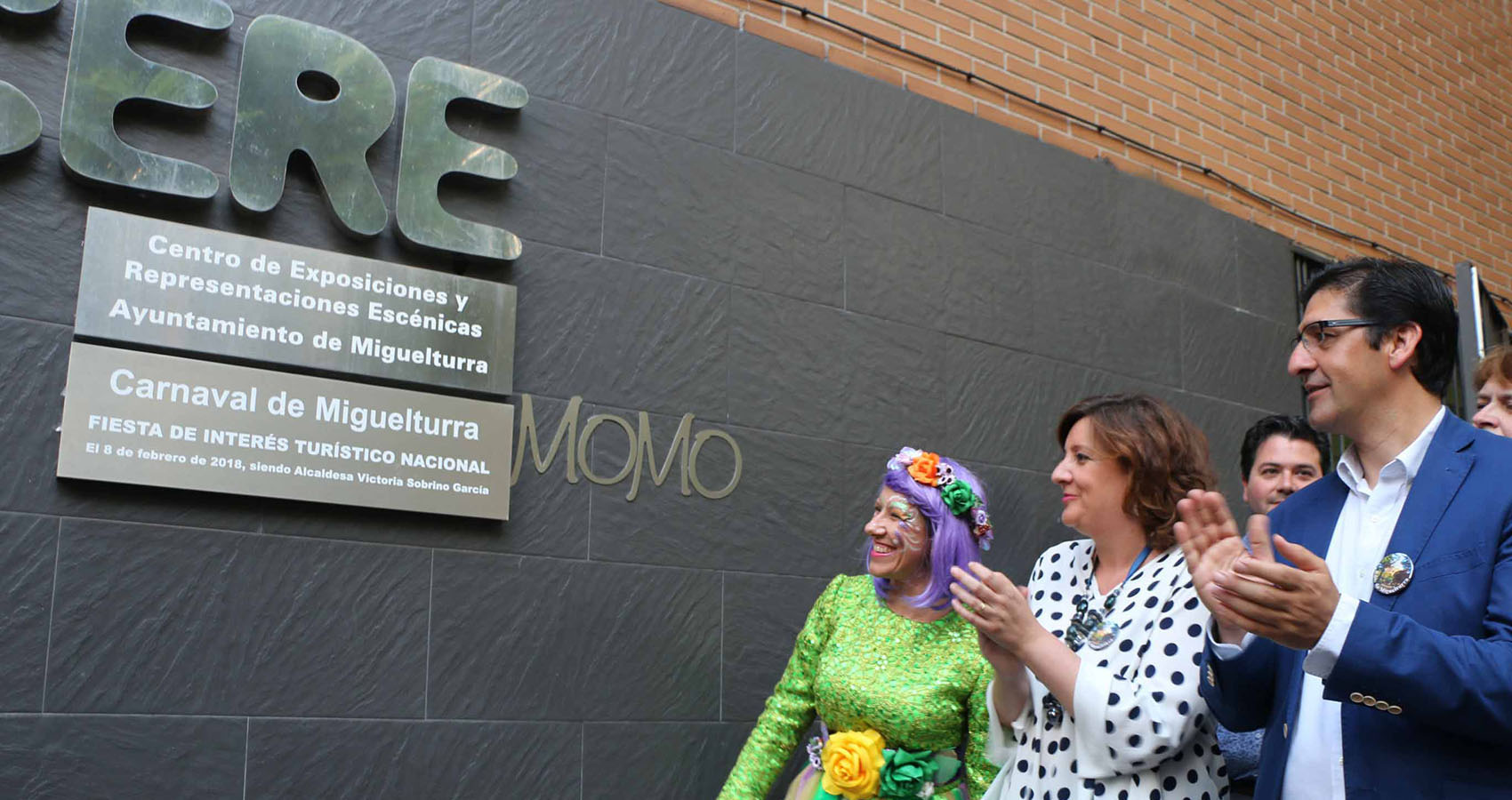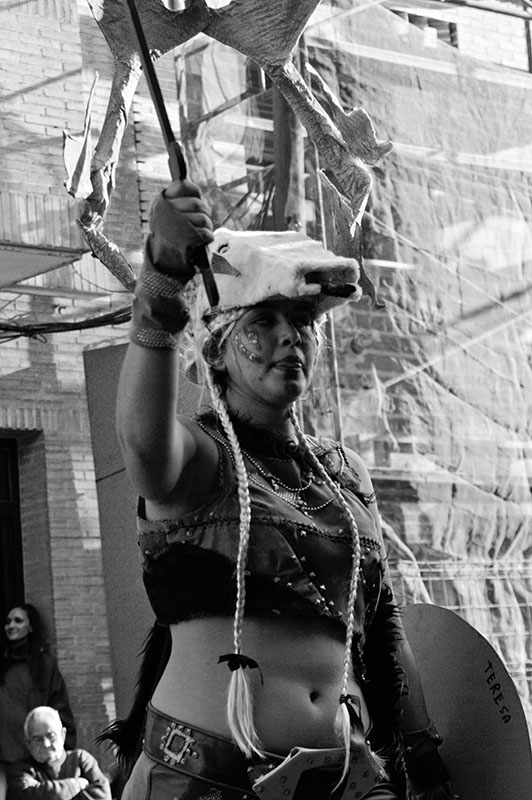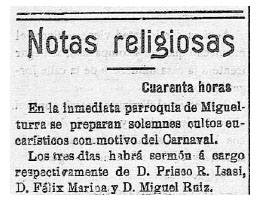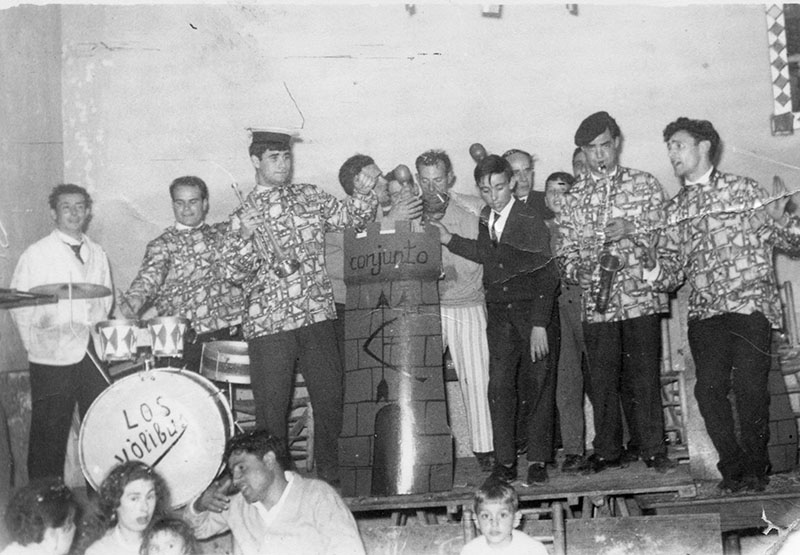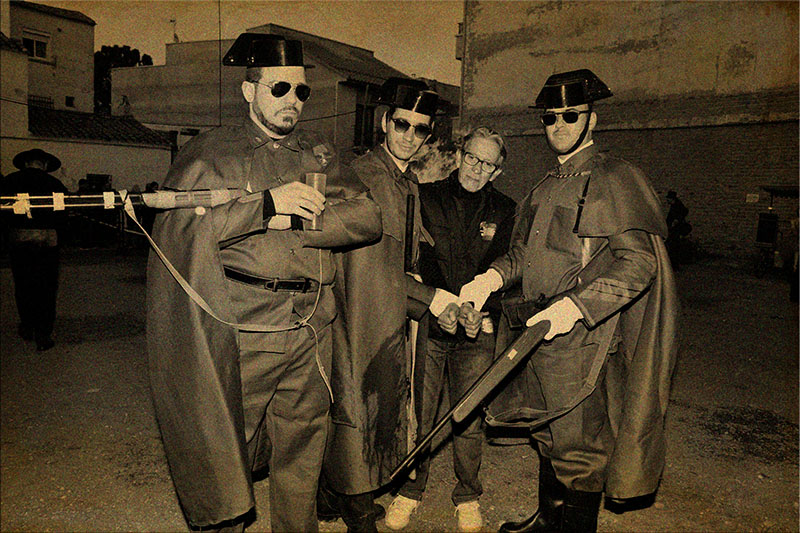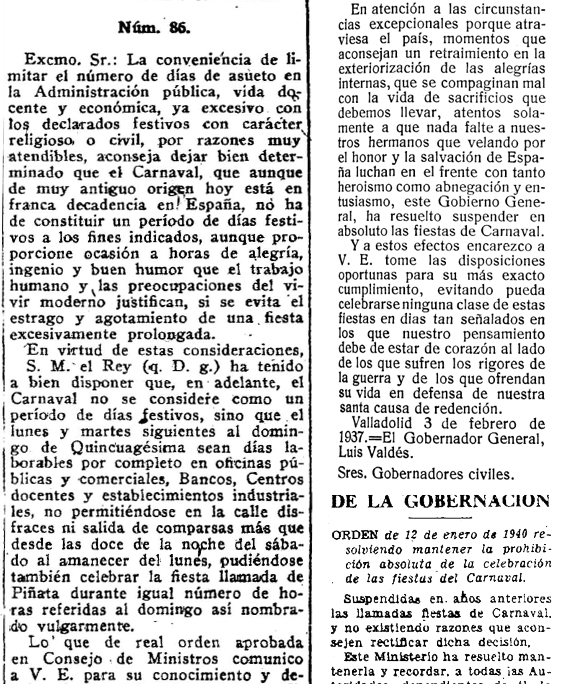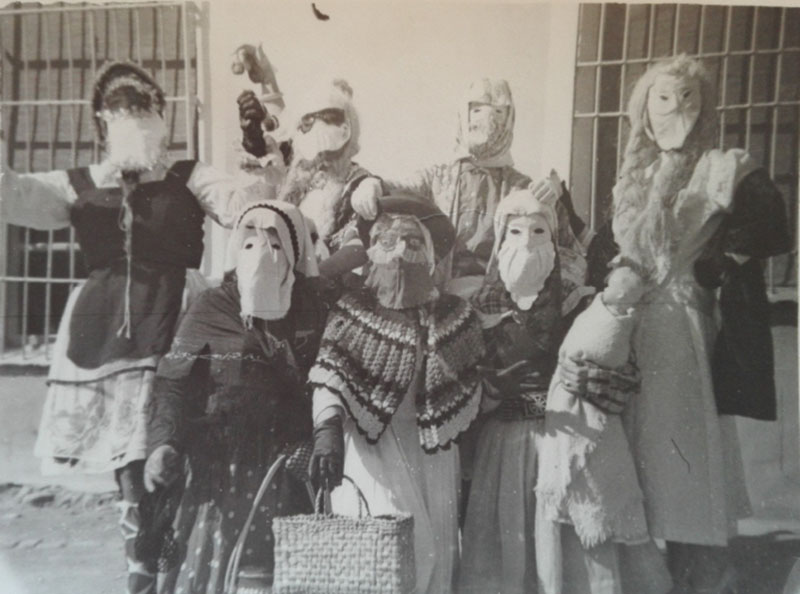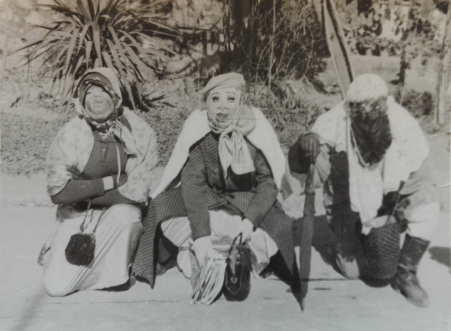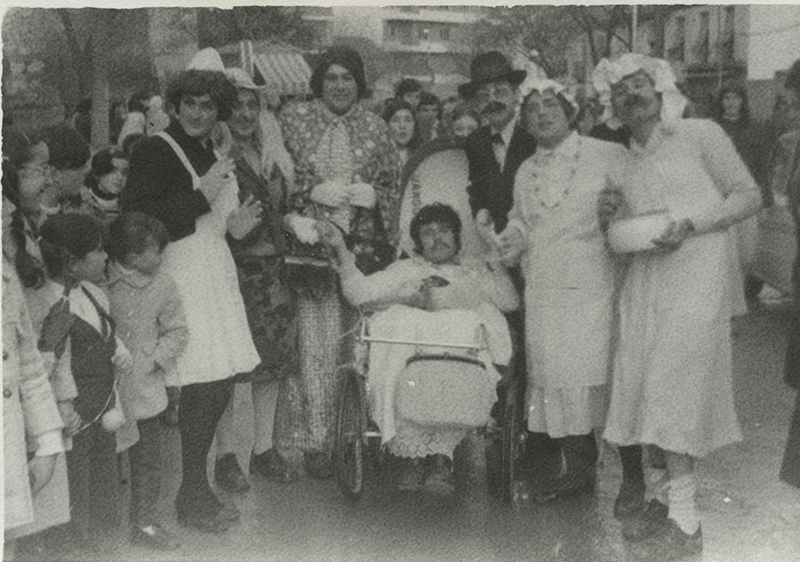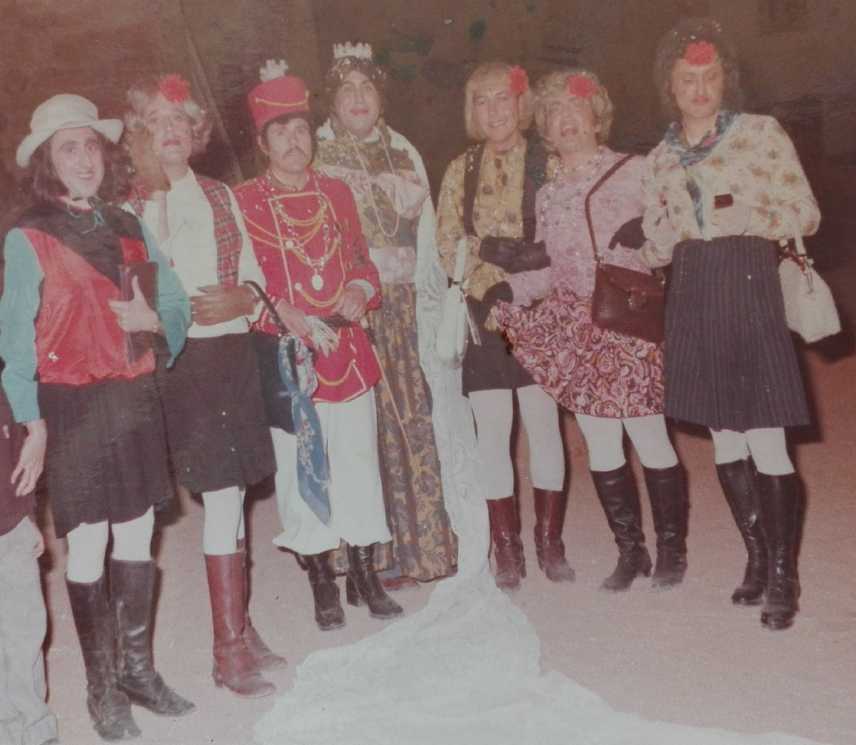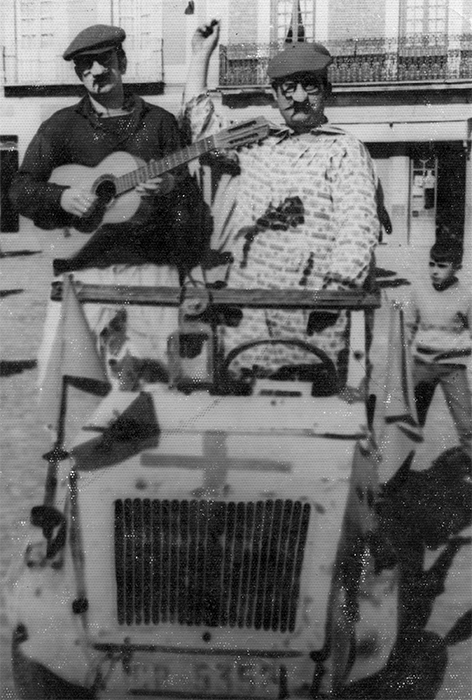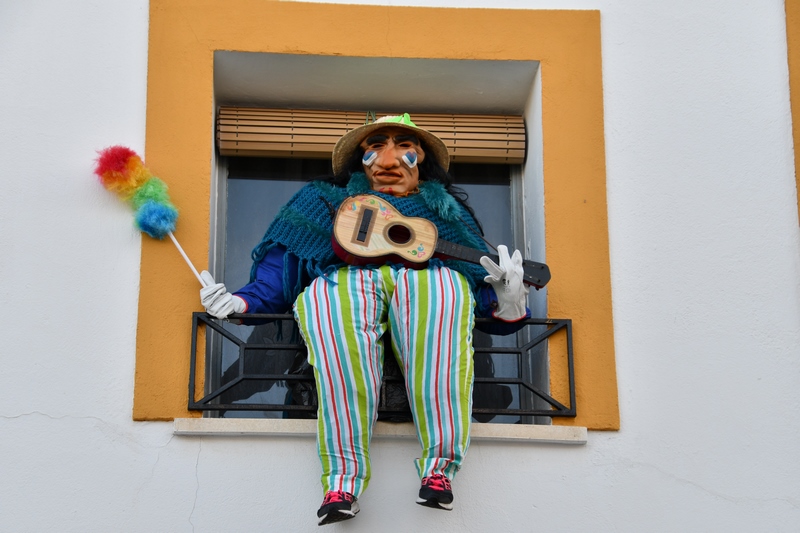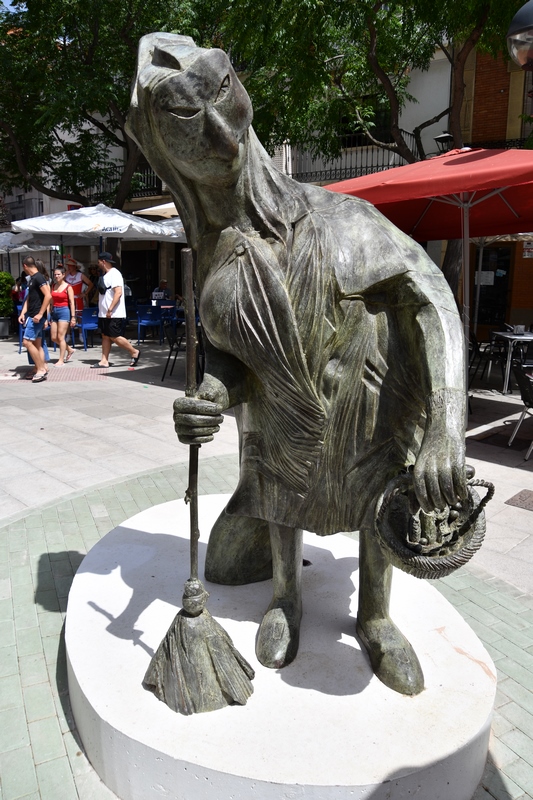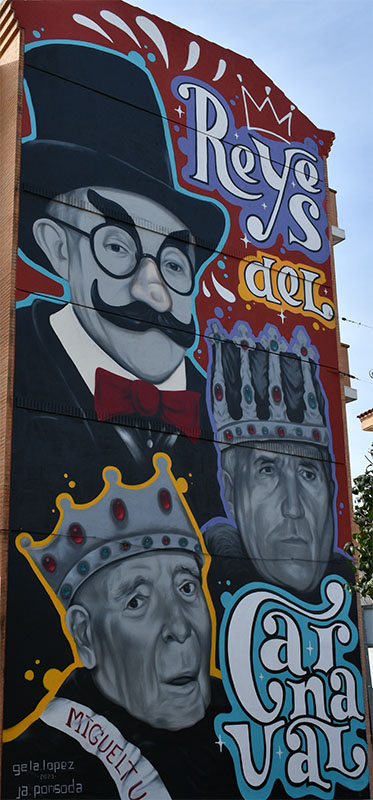What don’t you know me?
The probable origin of the carnival celebrations could well be the pagan festivals that were held in honor of the Greek god Dionysus or the Roman Bacchus, the Roman Saturnalia and Lupercalia, or in ancient Egypt in honor of the Apis ox. These festivities had debauchery, satire, jokes and disobedience of the people as a common denominator, being celebrated at the beginning of spring.
The meaning of carnival comes from the medieval Latin ‘carnelevarium’ whose meaning is ‘remove meat’, referring to the religious prohibition of meat consumption during Christian Lent, which begins on Ash Wednesday.
The dictionary of the Spanish language of the R.A.E., defines the word carnival as a popular festival that precedes Lent and that consists of masquerades, troupes, dances and other boisterous rejoicings.
During the Middle Ages, the carnival was reborn, despite the restrictions and persecutions for breaking and not respecting the rigorous religious norms at that time, celebrating dances and parties with abundant food and drink to face the abstinence of Lent.
The rise of the carnival in Spain will come from the hand of Felipe IV, during his reign the festive celebrations and especially the masquerades reached their splendor, lifting the prohibitions on carnival and the masks that Carlos I and Felipe II dictated.
Art is not exempt from this festivity, in painting with paintings such as ‘The combat between Don Carnal and Doña Cuaresma’ by Pieter Brueghel the Elder from 1559, ‘The Burial of the Sardine’ by Francisco de Goya at the beginning of the 19th century or ‘The Carnival of the Harlequin’ by Joan Miró from 1925.
In literature with references to carnival, for example, in ‘The book of good love’ by the Archpriest of Hita (1283-1359), where he recounts the challenge between Mr. Carnal and Mrs. Lent.
In 1842, the writer and journalist Ramón de Mesoneros Romanos, described in the ‘Matritense Scenes’ the burial of the sardine organized on the outskirts of Madrid.
2015. Piñata Sunday Parade
Rubén Darío in 1896 dedicates a poem to carnival entitled ‘Carnival Song’, in his book ‘Profane prose and other poems’, whose verses are as follows:
Muse, the mask prepares,
practice a jovial air
and enjoy and laugh at the party
of the carnival.
Laugh at the spinning dance,
show pink leg,
and sound, like a lyre,
your laugh.
To fly lighter
put on two rose leaves
how does your partner
the butterfly.
And that in your smiling mouth
who joins the joyful chorus
leave the porteño bee
its golden honey.
Join the masquerade
and while a clown grins
with a painted face
as Frank Brown;
while Harlequin reveals
that steals its tints from the prism
and Pulchinela appears
with his hump
say to Colombina the beautiful
what I think of her,
and uncork a bottle
for Pierrot.
Let him tell you how it rhymes
his love with the moon
and make you a poem in one
pantomime.
Serenade the air,
plays the golden bandolin,
carries a silver whip
for the spleen.
Be lyrical and be bizarre;
with the zither be Greek;
or gaucha, with the guitar
its pearls, dyes and lace
from Santos Vega.
Move your splendid torso
through the picturesque streets
and play and decorate the Corso
the victory of your laughter
with fresh roses.
Of pearls waters a treasure
of Andrade in the nest region
and in Guido’s hopalanda
gold dust.
Sorrows and duels forget,
sing delights and loves;
look for the flower of flowers
for Florida:
with harmony you love
of crystal rhymes,
and you defoliate their plants,
a madrigal.
Pirouette, dance, inspire
crazy and jovial verses;
celebrate the merry lyre
the carnivals.
Their cries and their songs,
their comparsas and their costumes,
its pearls, dyes and lace
and pom poms.
And carry the swift breeze,
sound, argentinian, fresh,
the victory of your laughter
tightrope walker!
Manchego People
February 12, 1917
The carnival festivities in Miguelturra are lost in time, being transmitted verbally from one generation to another.
There are few documents that can prove an approximate date. Two of these documents, the oldest found so far, are dated February 19 and 26, 1898, belong to the publication Torralbeña Jouth and have been digitized by the Castilla-La Mancha Study Center (UCLM).
They prove the existence of two carnival dances, one in the Friendship Center and the other in the Liberal Circle, confirming the popularity of the Miguelturra Carnival at the end of the 19th century.
Before Spanish Civil War, Carnival had two different parts the religious and the profane.
The religious part, enjoyed the celebrations of the Jubilee or Exercise of the XL hours, whose cults were composed of masses, adorations and exposition of the Blessed Sacrament where the most absolute respect prevailed.
The bustle of the carnival was forbidden in the area of the parish and surroundings, where the masks acceded stripped of their disguise.
Once Spanish Civil War ended, the religious Carnival gradually declined until its disappearance with the beginning of the democracy.
The article dated from 26th of February of 1898 ends as follow:
‘In summary, and to conclude this excruciating drag,
i will say very loud so that the whole world knows,
that in Miguelturra we had a great time at carnival;
that there is joy until death,
but little desire to work’.
Street Mask of 1975
Photo of Carlos Robledo
The profane part of the carnival is the festive part, that of the people, a party with its own hallmarks of ‘The Street Mask’, the essence of the Miguelturra Carnival and the part that differentiates it from other carnivals.
The street mask is cheeky and joking, it is disguised with old clothes or garments in disuse, rags or scraps kept in trunks and closets awaiting the arrival of the carnival. She invades the main streets of the town with color and joy, with her face covered so as not to be recognized by a mask, mask or a simple cloth with two holes at eye level and another in the mouth, giving jokes to countrymen and strangers in a strident and shrill voice at the cry of What don’t you know me?, using phrases like:
‘Oops! How clumsy you are’
‘with the time we’ve spent together and you don’t know me’
‘we love how stupid you are’
‘Look, look, look, look, don’t you know me? spinning on itself’
With this type of phrases and similars, the only goal for the Street Mask is to get the bustle, the bewilderment and the laughter of their victims, avoiding to be recognized in order to gloat in them the next days.
2014. The Alhiguí
Photo by Manuel Viso
Before the beginning of the Civil War and among the masks, a character called The Alhiguí (in other towns he is known as el higuí) was mixed. It was a mask that carried a rod or a long reed, in which hung with a string a pepper or a fig. He took advantage of the large groups of people to create a commotion and throw candies or chestnuts shouting ‘To the Alhiguí, to the Alhiguí, with the hand no, with the mouth yes’, while the kids tried to take away the fig or pepper hanging from the pole. This character was becoming less popular until his disappearance, although nowadays he still shows himself occasionally.
The ‘murgas’, ‘estudiantinas’ (also known as tunas) and ‘comparsas’, were in charge of giving the spicy and informal touch with their music and songs (well-known as ‘coplillas’). Today we remember them through the contest of Murgas and Chirigotas, while in the street have been replaced by the charangas that give the colorful musical to the party. The comparsas can be seen parading on ‘Piñata Sunday’, the last day of the Carnival.
Shortly before the start of the Civil War, Miguelturra continued to celebrate two dances, organized by the Union and the Casino. There was a terrible rivalry between the centers and they competed to find out which of them was better or lasted longer, emerging ballads like the one from 1935.
Shrove Tuesday
two dances have been celebrated,
triumphs over the two Casinos
the Republican Center.
The others are willing
give them the chocolate,
and we eat
fried meat with tomato.
There the dance lasted
sixteen hours, sure,
and here twenty-four,
sharing a good cigar.
The two Boards are invited
they with just modesty,
and which of the two is agitated?
those of S.A. at the door.
They have eaten
very tough meat,
but here they have eaten
a good fried meat.
Very hard goat meat
they ate at the Union,
and here we have had enough
of fried lamb.
They with many pesetas
they have not had humour,
and we have had
“blood”… and a good heart.
To the tireless girls
of this Liberal center,
debemos de dar un viva
to all in general.
Long live our president
which is D. Damian Corral,
and long live the whole board
of the Liberal Casino.
Old songs say very
obvious truths,
but they must be said
so that people become aware.
In heaven God commands
in the field the gypsies,
in the town of Miguelturra
the republicans command.
And gentlemen, in this town,
who rules in the Carnival?
the Culture Center
or the Liberal Casino?
The centers had their private security with ‘The Stickman‘, who monitored for good decorum and behavior, was equipped with a high stick with colored ribbons and bells, giving notice to those who committed the odd slip.
After the Civil War, the dances were reactivated again, being held in two centers, the Worker Center and the Casino, the latter occupying the premises of the former Catholic Agrarian Union, current Day Center. The entrance to the dances was only allowed to members and they had to remove their masks to prove their identity to a member of the board.
Prohibitions and restraints
of the Carnaval
Not even the Civil War could with the carnival, although it was very restricted to the neighborhoods during the terrible conflict that devastated Spain, much less did the dictatorships and prohibitions, not even time has been able to with the joy of the Churriego carnival.
Among other prohibitions that tried to end with the Carnival are the dictatorship of Primo de Rivera and its Royal Circular Order Nº 86 of February 1929, which converted the Carnival holidays into workdays, being limited only to Carnival Sunday and Piñata Sunday and forbidding any Carnival manifestation outside these two Sundays.
On February 5, 1937 and in the middle of the Civil War, it was published in the B.O.E. nº 108, the suspension of carnivals in the national zone and finally in the B.O.E. On January 13, 1940, page 277, Serrano Suñer signs the order to maintain the absolute ban on the celebration of the Carnival festivities, which was maintained until the end of the Franco dictatorship in 1975.
Carnival is celebrated on Sunday, Monday, Tuesday and Piñata Sunday. Monday and Tuesday were the busiest days, because on Sundays the Civil Guard of Ciudad Real used to come to disperse those who dared to dress up. 1947 is the only year in memory in which the visit of the Civil Guard was on horseback and it was done because of a complaint from a neighbor.
Civil disobedience is the only thing that repressions and prohibitions achieve in our town, without serious confrontations during this time, only the persecution suffered by the masks by the night watchmen (municipal police) and Civil Guard.
The masks escaped from their pursuers through the houses, whose doors in many cases remained open and provided an escape route, they jumped over walls or climbed walls to climb onto the roofs, all to avoid arrests and fines. The catched masks showed his fine with pride despite of the hurt in his pocket
Mayors, councilors and even some other Civil Governor dared to break the prohibitions that themselves remembered to all year to year. Amalio Segura, second King of the Carnival of Miguelturra, left us the following written in his handwriting: January 31, 1948 was the last act signed by Mayor Manuel Ramos. The first of February 1948 was Carnival Sunday and the eighth Sunday of Piñata. On February 9 or 10, Manuel Ramos was dismissed as mayor, telegraphically and by order of the Civil Governor of the Province for not wanting to respect the order prohibiting the Carnival of Miguelturra.
1935. Disguised women in carnival
The beginning of democracy and longed for freedom, is the trigger for the expansion of Carnival, not only in Miguelturra, but also in several towns and cities in Spain. The street mask finally takes to the streets without restrictions, the first carnival clubs begin to be created and in December 1981, the Cultural Association of Carnival Clubs will be created., of which the following Peñas have formed part: Old Glories, The Ham, The Chambra, The Goat, The Reapers, The Hat, Yellow Baron, XXI Century, Young Rebels, The Jester, Pioneers of the West, Manchegan Crafts, The Top Hat, Impotent Chotos, Zurraspaos Underpants, The Bitumen, The Mistreat yourselves, The Disaster, Los Sopones, Los Sofocaos, Major Masks, Los Cansaliebres, Charanga Alhiguí, El Puntillo, Cultural Athenaeum, Los Rocheros, Kapikúa, Fregquísimos and Heirs of Loquilandia.
Currently the existing clubs are: The Ham, The Goat, The Reapers, The Yellow Baron, The Jester, The Mistreated, Major Masks, Los Cansaliebres, Charanga Alhiguí, El Puntillo, Cultural Athenaeum, Los Rocheros, Kapikúa, Fegquísimos and Heirs of Loquilandia, children’s choir.
In 2021, the carnavaldemiguelturra.es Historical-Cultural Association was created with the purpose of disseminating the Miguelturra carnival, through the acquisition and digitization of documents, photographs and videos of the carnival festivities, as well as the maintenance of the carnavaldemiguelturra.es website. Created in 2017, since then it has been the official website of the Miguelturra Carnival Peñas Cultural Association.
The creation of the Cultural Association of Peñas del Carnaval, facilitates the expansion of activities within the ten days that the Churriego carnival lasts and together with the City Council, all the events and contests are organized, promoting the party in such a way that on the 1st of March 1983, are declared Festivals of Regional Tourist Interest, one year later, on March 1, 1984, the Provincial Council of Ciudad Real declared them as Festivals of Customary and Cultural Interest.
On February 8, 2018, the Secretary of State for Tourism resolved that the Miguelturra Carnival be declared a Festival of National Tourist Interest, BOE No. 47, Sec. III, page 20826 of February 22, 2018, will make said declaration official.
Declaration as Fiesta
of Cultural Costumbrista Interest
Declaration as Fiesta
of Regional Tourist Interest
Declaration as Fiesta
of National Tourist Interest
On June 16, 2018, the first Summer Carnival will be held, to celebrate the declaration of the Miguelturra Carnival as a Festival of National Tourist Interest.
At the Carnival Palace, a recognition was made to all those people and clubs that have made it possible for the Miguelturra Carnival to obtain said declaration.
In the central streets of the town and from very early the celebration began, to finish it until late at night in the Doctor Fleming Park at the rhythm of carnival.
The cries, proclamation of the major masks, children’s carnival, fruit in a frying pan, burial of the sardine, murgas and chirigotas, the Carnival Museum Costume Contest and the Parade of Comparsas and Floats on Piñata Sunday, are the most significant activities that take place. They have been celebrating since its creation in the eighties of the last 20th century to the present day.
After the 2020 carnivals ended, a few days later, on March 14, Royal Decree 463/2020 was published, containing the declaration of the state of alarm in Spain due to the health situation throughout the planet due to the COVID-19 virus and on 22 September 2020, the Association of Peñas and the Miguelturra City Council decide to suspend the 2021 Carnival, making the news public on September 23, for the first time in its history the Miguelturra Carnival will not be celebrated.
The 2021 carnival only celebrates various activities that comply with the sanitary protocols, the window contest and a video contest through the TikTok social network, the urban art mural project ‘Carnival Walls’ also begins by the artists Gela and Javi Ponsada, three large murals on Carnaval Street, Pradillo de Clavería and on the facade of the Pradillo building at the end of Cervantes Street.
With resignation, prudence and civility, the street masks and the peñas stay at home, all the acts are suspended and the Spirit of the Churriego Carnival invades windows and balconies, remembering the most emblematic festival of Miguelturra.
The Spirit of Carnival
invades balconies and windows
Mural
Street Carnival
On September 29, 2021 and due to the improvement of the pandemic, the Peñas Association and the Miguelturra City Council announce the possibility of celebrating the 2022 Carnival, as long as the health situation allows it, the celebration of the party being subject. to the rules and restrictions that may exist at that time.
The 2022 carnival brings two new novelties, on Tuesday, March 1, in the morning it is presented at the Carnival Palace, the book ‘Get to know me, Miguelturra Carnival. 40th Anniversary of the Peñas Association‘, by the Miguelturra author Berna Martínez Romero and in the afternoon, the Monument to the Street Mask, the work of the sculptor Fernando ‘Kiriko’, is inaugurated, being located in the Spain Square, presiding over and watching everything that happens in Carnaval Street.
A few months later, coinciding with the celebration of the summer carnival on June 18, a second statue by the same sculptor was inaugurated, an Alhiguí that will accompany La Mascarona, being a tribute to the two great figures of the Churriego Carnival.
On February 15, 2023, a new mural sees the light on Carnaval street, it is another colossal work by Gela and Ponsada with the figures of the three Kings of Carnival: Miguelturra, Gornés, Amalio and Serafín.
‘Get to know me, Miguelturra Carnival.
40th Anniversary Association of Peñas’
Berna Martínez Romero
Mascarona
Fernando ‘Kiriko’
Alhiguí
Fernando ‘Kiriko’
Carnival Street Mural ‘Three Kings’
of Gela and Ponsada
Sources consulted:
- Cultural Association of Peñas of the Carnival of Miguelturra
- Historical-Cultural Association carnavaldemiguelturra.es
- ‘Get to know me, Miguelturra Carnival. 40th Anniversary of the Peñas Association’. Berna Martínez Romero
- Peñas of Miguelturra
- Honorable City Council of Miguelturra
- ‘Lanza’ Daily by its website lanzadigital.com
- ‘Juventud Torralbeña’. Center of studies from University of Castilla-La Mancha (UCLM)
- ‘Chronicles of One Hundred Towns, No. 6 Miguelturra’. Author: José Luís Sobrino
- ‘Carnival in La Mancha. Study room of the Popular University of Miguelturra’. Author: Julián Plaza
- State official newsletter (B.O.E.)
- Official Journal of the Ministry of the Army
- Manchego People

